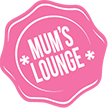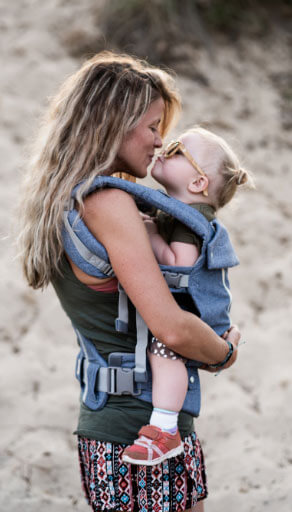Australian Children are Still at Risk of Drowning
![]()
Image source
We come from a family of sailors, we live in Australia and have had enough experience with near-drownings that water safety has always been a priority for us as parents. Our children have been able to float on their back from the age of 6 months. We’ve spent thousands of dollars on swimming lessons and at the ages of four and six, they no longer need floaties to swim. Do you know what that means?
All it means is that we no longer have to be IN the water at the same time as they are. But one of us still needs to be NEXT to them while they’re in it. ALL THE TIME. No distractions, fully focused and sober. The pool gate still needs to stay closed all the time. The rules of the pool (no running, diving etc) need to be adhered to with strict consequences if they’re broken.
Despite all of the efforts we go to, all of our children are still at risk, especially if we let our guard down. Which happens all too often…
The phone rings inside, the dinner burns, the doorbell chimes, maybe just one more glass of wine. You quickly duck away, they’ll be fine for a couple of minutes… until the time they aren’t.
“Her shoe lace got caught on the bicycle pedal as she cycled around the pool, and even though she could swim, she fell into the pool with the bike on top of her and she couldn’t get out. By the time help came, it was too late,” writes one parent, still in anguish.
We have a safety fence around our small pool. The City Council inspector signed it off a few months ago and we feel that our children can play safely both inside and outside the house. We’ve taught them the rules and they obey them… until the day they didn’t.
I’d sent the children downstairs to play in the garden while I finished some work, telling them we’d all go for a swim when I was done. I heard them playing on the trampoline and kicking the ball around. The next significant noise I heard was a splash. I was downstairs and at the pool in less than 3 seconds, only to find my four-year-old daughter jumping out of the pool, guilty that she’d been caught out. My six-year-old son who should-have-known-better was sitting on the stool they’d taken from the kitchen to stand on and open the pool gate. Even though they knew the rules, being the ages they are, they acted on impulse with the only rational thought in their mind being that they were invincible. “If you’d slipped and bumped your head,” I ranted at her for the rest of the day, “you’d have drowned with no adult to save you.” Kids can open child-safety gates – all they need is a chair and the will to do it.
You leave Grandad in the pool with your toddler, who’s using a pool noodle as a floatie. You give him strict instructions to keep an eye on his grandchild at all times. “Of course I will,” he says. “Go and have a shower, we’ll be fine”… until he’s distracted, just for a minute.
“My son was 18 months old when he nearly drowned in Fiji, whilst right next to Dad,” writes Chelsea. “He refused to wear floaties and had a major melt-down, so Dad decided to sit right next to him. People came and started talking to Dad, so his head was turned away from my son, even though he was on the same step. When I finished doing laps, I asked where my child was and there he was on the bottom of the pool… it was so silent. He just slipped off the steps and went under, no splashing, no struggling, no noise. He just went under and couldn’t get himself up. Another minute and he would have been a goner.”
For the last 30 years, drowning and motor vehicle accidents continue to be identified by the Australian Bureau of Statistics as the greatest causes of accidental death in children in Australia. Half a million children on this great island of ours are at risk of drowning every year.
Despite massive public water safety campaigns, 50 000 children leave primary school each year unable to swim.
Despite strict rules for Pool fencing, children still drown in home pools, in dams and in waterways.
Despite intensive Surf Life Saving campaigns, children still swim outside the flags and get caught in rips.
The 2012/13 Royal Australian Life Saving National Report on Drownings stated that 291 people died in Australian waterways, an increase of 7 from the previous year. Surf Life Saving Australia tells us that volunteer surf life savers rescue over 12,000 people on average nationally.
During the last school holidays, most children in Australia would have done at least one of the following dangerous activities:
Had a bath
Frolicked in the sea
Played by a dam
Swam in a pool
Splashed about in a spa
or
Sailed on a boat
Last year, 31 of those children died in baths, in spas, in pools and in waterways, with 81% of under-5s being as a result of falls into water. It can happen so easily, so quickly and so silently. It can happen to anyone.
I was six years old when I saw my baby brother fly though the air like a football and land in the middle of a creek. We were about to have dinner on a friend’s boat that was moored on a rickety old jetty. I was already on board, and my parents were walking along the uneven wooden planks in the dark. My mother came first, carrying my baby brother, a precious bundle only ten days old. As she turned around and handed her newborn over to my Dad so she could climb aboard, Dad stepped backwards slightly only to have his foot crash through a rotten plank. Horror-struck, I watched my baby brother fly through the air and land in the middle of the creek. The tide was slack and the tidal waters still, which probably saved his life. Both my parents jumped into the water at once, and reached under simultaneously, grappling blindly, convulsively, for their baby. From out of the muddy waters they found him and hauled him out, while I screamed non-stop from the boat. My baby brother survived – in fact, that little muddy bundle hardly even blinked. The rest of my family were completely traumatised but a trip to the Mater Children’s Hospital allayed any further fears for his safety. It was a moment in time that I will never forget. And neither will my parents.
If you follow these simple rules as closely as you can, knowing that if you don’t, the consequences will change your life forever, then you’re most of the way there.
- NEVER leave your children unattended in water: pools, baths, spas, dams, creeks, the ocean
- NEVER leave your children unattended NEAR water
- Teach your children how to float on their backs
- Teach them how to swim
- Teach them to swim between the flags at beaches
- Put life jackets on them whenever they’re on deck on a boat
- Fence your pools
- Fence a safe area to play for children on larger properties with dams
- Learn CPR and First Aid
- Teach your kids First Aid and emergency adult response situations
Karen suggests that when you have a big group of kids in the pool and adults together drinking and talking, take turns to sit in the pool area, without alcohol, and actively supervise. Do a head count of the kids and keep the gates shut so you know how many you are watching.
Chelsea says to keep eyes on kids at all times when near a pool. Swimming lessons are a must. Rules for pools must be adhered to- no running. Check the depth of water before they swim, jump or dive and always always always shut the gate and have your eyes on your precious kids.
National campaigns continue to be strong and punchy, using real life stories from parents who have lost a child to drive the message home. Word of mouth about incidents we’ve heard about can make a huge difference and may save a child.
Can you share anything that might make a difference to a family?
A nurse and counsellor by trade, Caylie Jeffery has had many adventures and experiences that have made her into a strong, independent, and interested woman. Being a mindful parent in a world that loves to turn children into mindless robots is her biggest challenge yet, and she is determined to instil passion about life, books, art and people into their hearts and minds.
Caylie has a blog where she writes familiar essays about subjects that catch her breath. She is establishing herself as a freelance writer, and is an emerging author of children’s stories, teen adventures and creative adult non-fiction.










